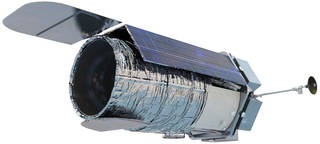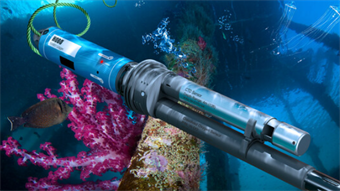Video: Report Outlines Exoplanet Research Roadmap for NASA
S. Himmelstein | September 08, 2018A congressionally mandated report by the National Academies of Sciences, Engineering and Medicine urges NASA to mount a large direct imaging mission – an advanced space telescope – capable of studying Earth-like exoplanets orbiting stars similar to the sun. The goals of such a venture would be to understand the formation and evolution of planetary systems as products of star formation and characterize the diversity of their architectures, composition and environments, and to learn enough about exoplanets to identify potentially habitable environments and search for scientific evidence of life on worlds orbiting other stars.
Since current knowledge of the range of characteristics of planets outside the solar system is incomplete, a holistic approach to studying habitability in exoplanets, using both theory and observations, is recommended to search for evidence of past and present life elsewhere in the universe.
Developing a direct imaging capability will require large financial investments and a long time scale to yield results, but the effort will foster the development of the scientific community and technological capacity to understand myriad worlds. To detect a system analogous to our own Solar System, the Exoplanet Science Strategy report recommends using instruments that enable direct imaging of an exoplanet by blocking the light emitted by the parent stars – such as a coronagraph or starshade.
Ground-based astronomy is also expected to contribute to this effort. The future Giant Magellan telescope (GMT) and proposed Thirty Meter Telescope (TMT) would facilitate advances in imaging and spectroscopy of  Artist's rendering of the Wide Field Infrared Survey Telescope observatory. Source: NASAplanetary systems, and could detect molecular oxygen in temperate terrestrial planets in transit around close and small stars. The National Science Foundation should invest in both telescopes and their exoplanet instrumentation to provide all-sky access to the U.S. community.
Artist's rendering of the Wide Field Infrared Survey Telescope observatory. Source: NASAplanetary systems, and could detect molecular oxygen in temperate terrestrial planets in transit around close and small stars. The National Science Foundation should invest in both telescopes and their exoplanet instrumentation to provide all-sky access to the U.S. community.
Currently under development, NASA’s Wide Field Infrared Survey Telescope will permit a survey of planets farther from their stars than surveyed by Kepler and other missions, and will enable a large direct imaging mission.
The report also recommends NASA establish a mechanism to systematically collect data on exoplanet atmospheres early in the James Webb Space Telescope mission.




